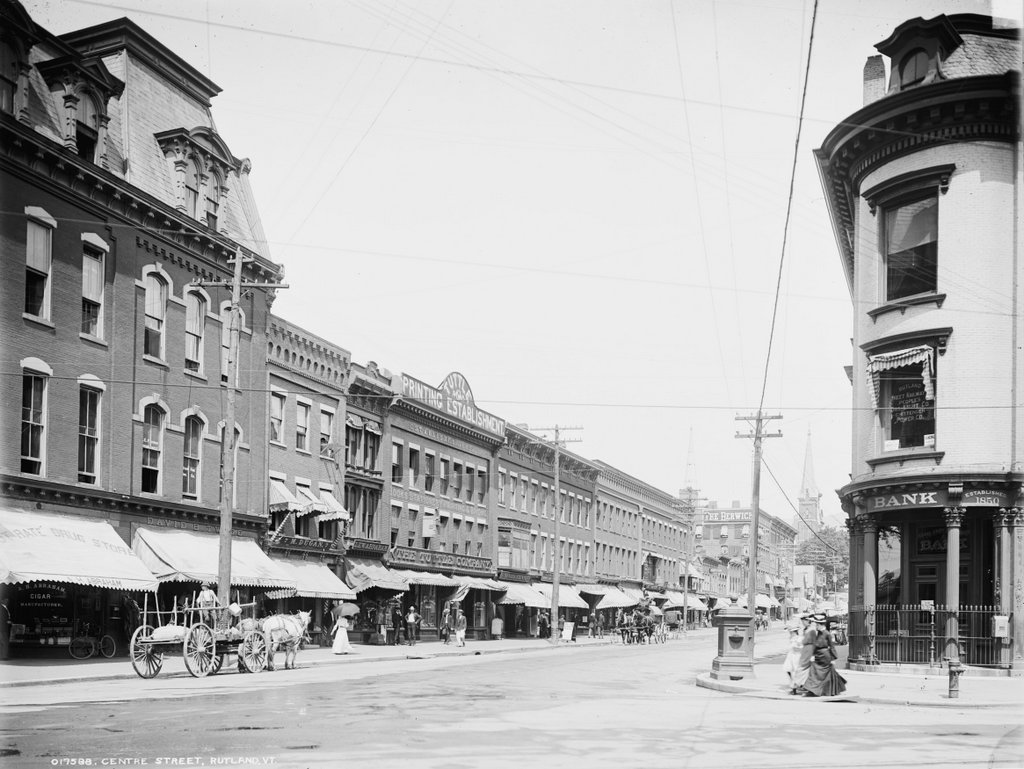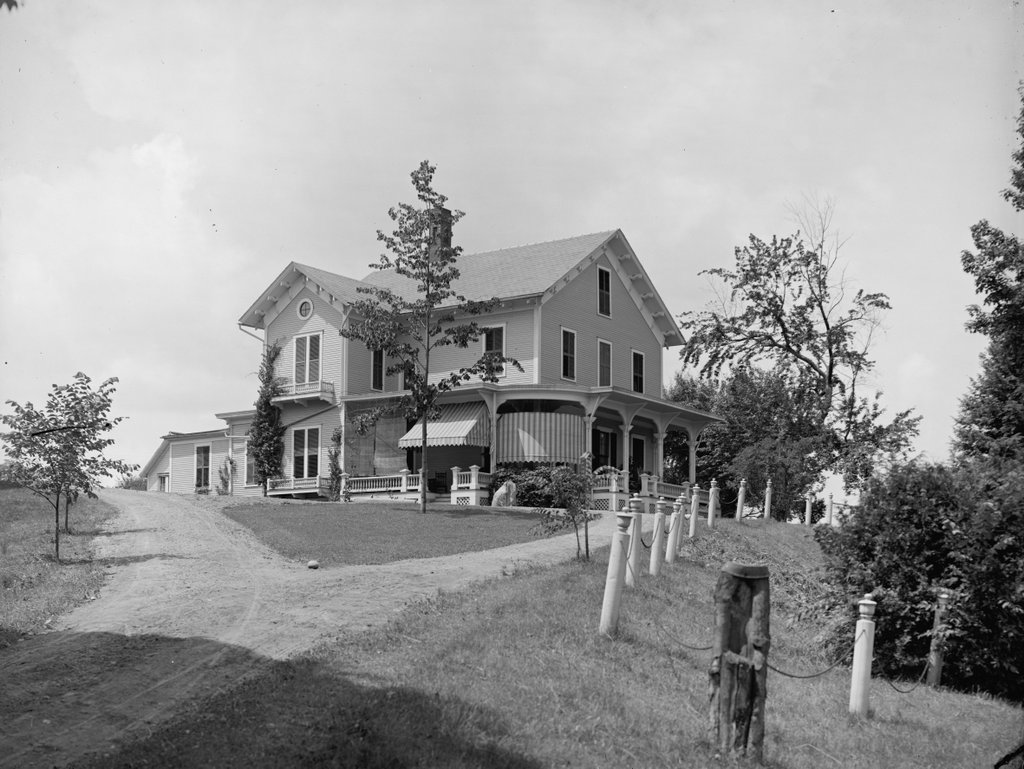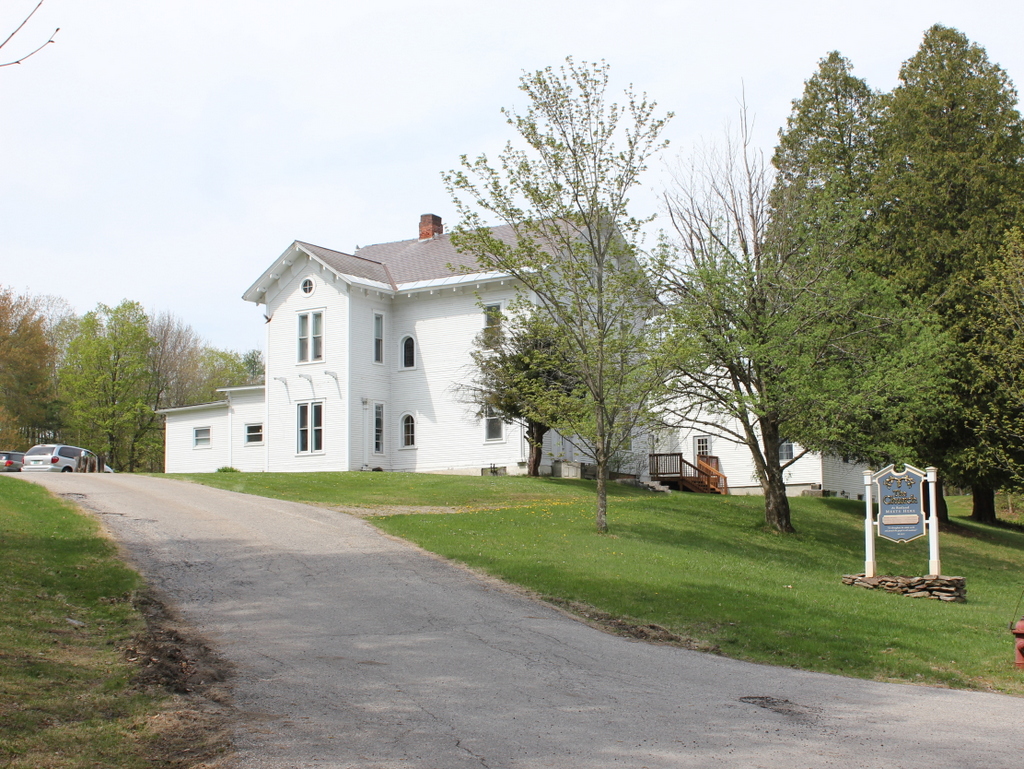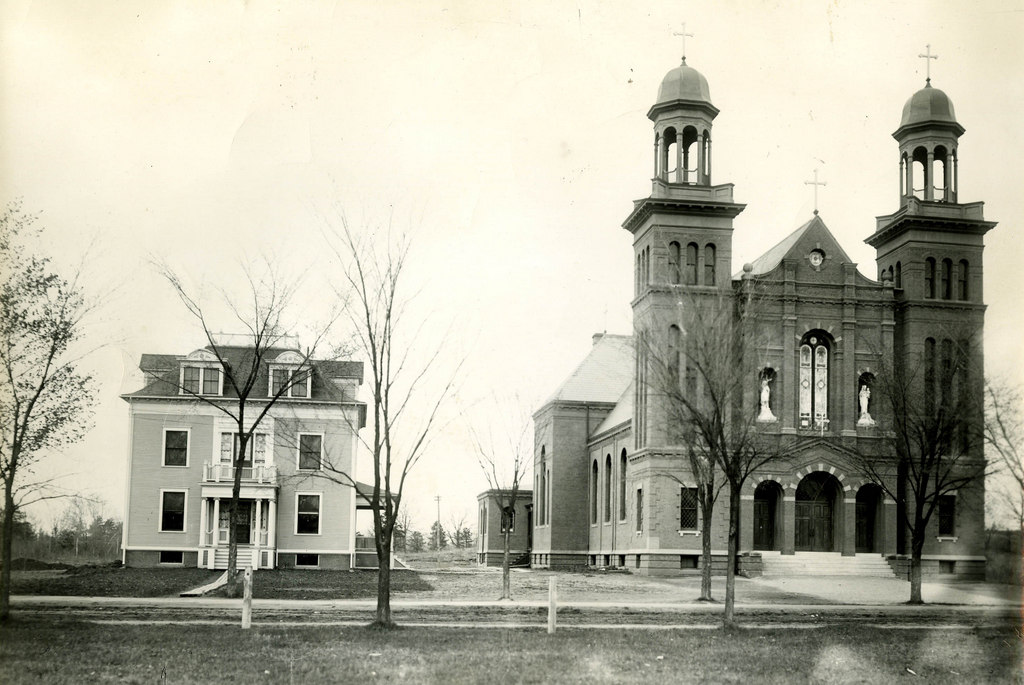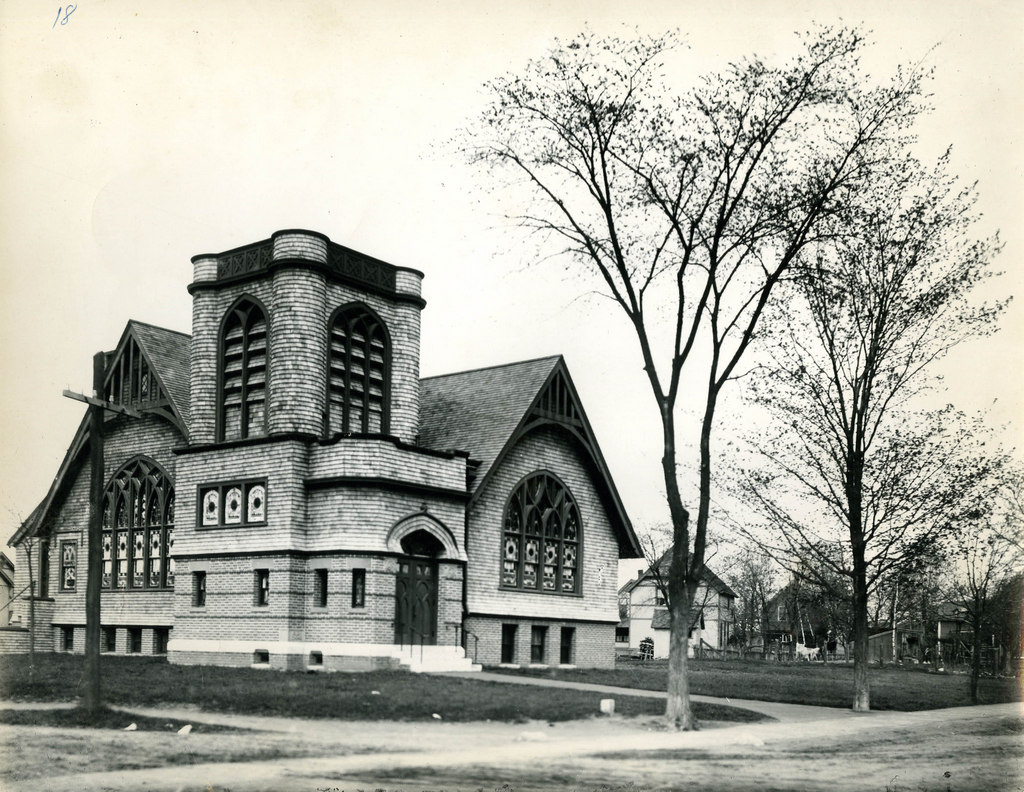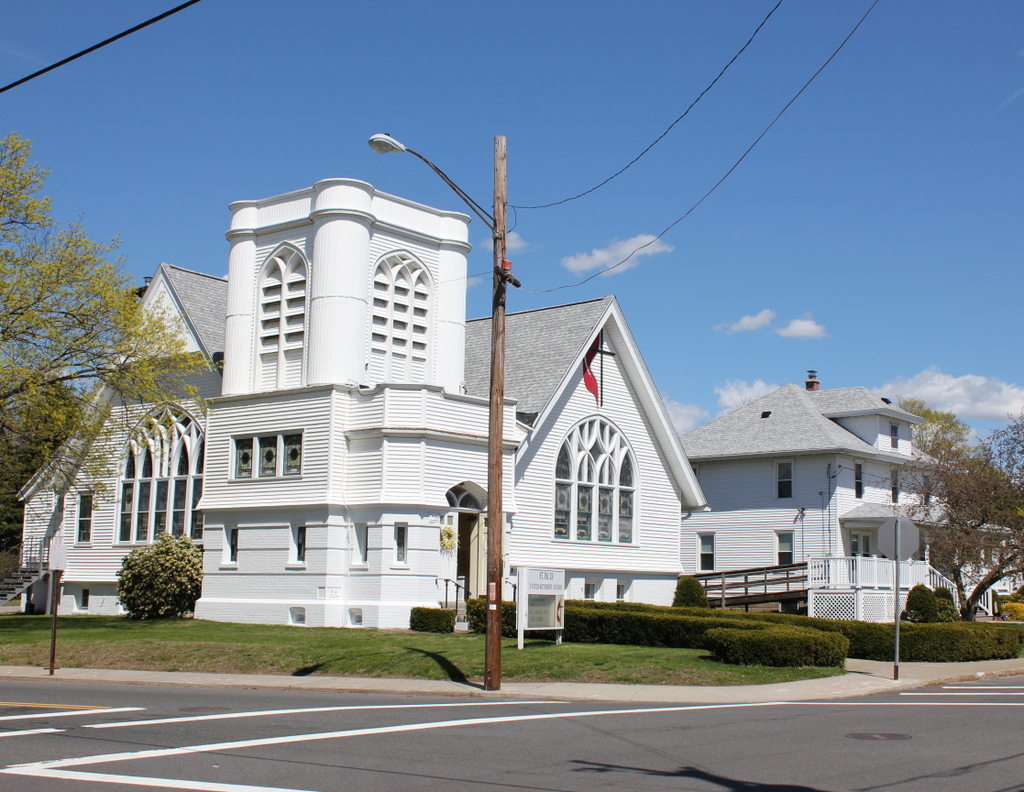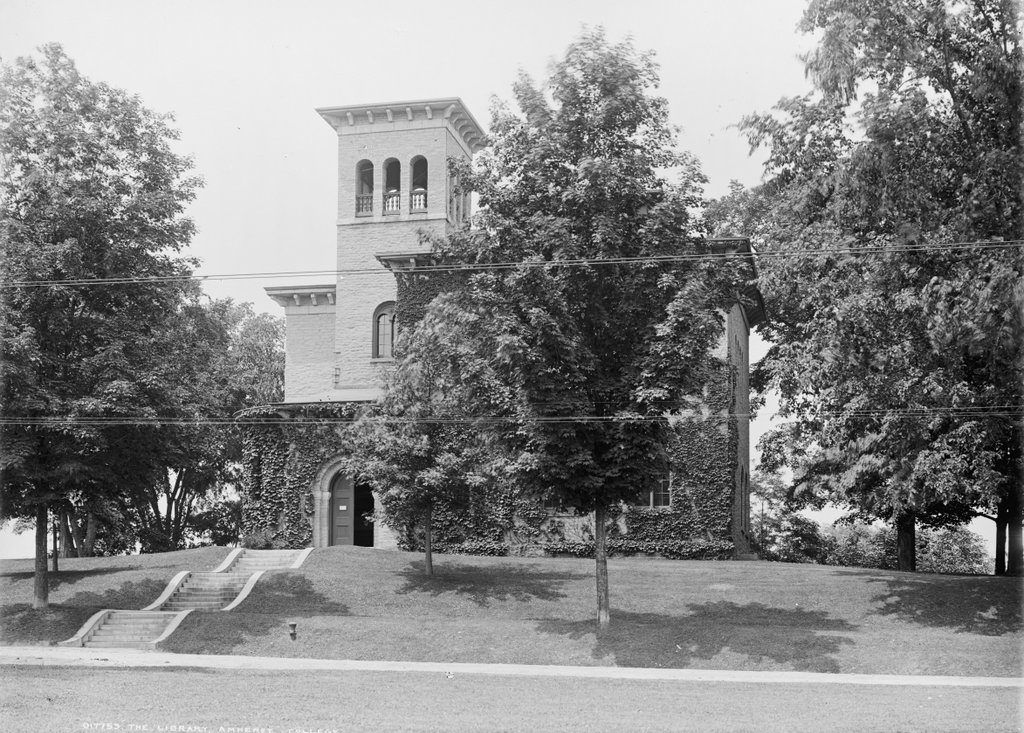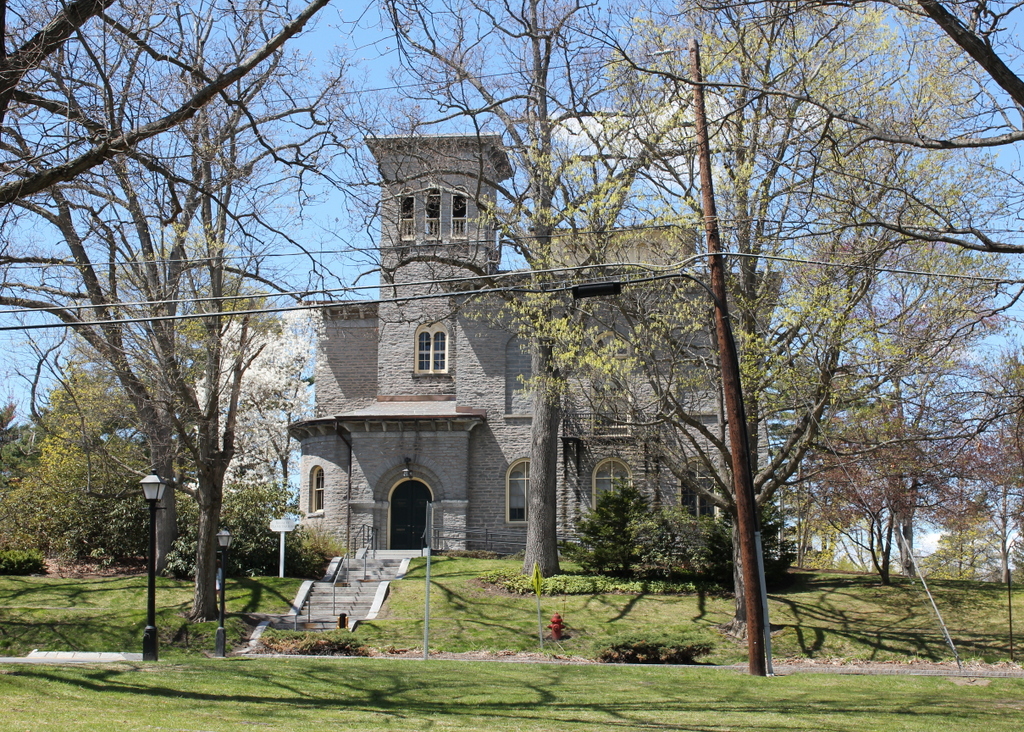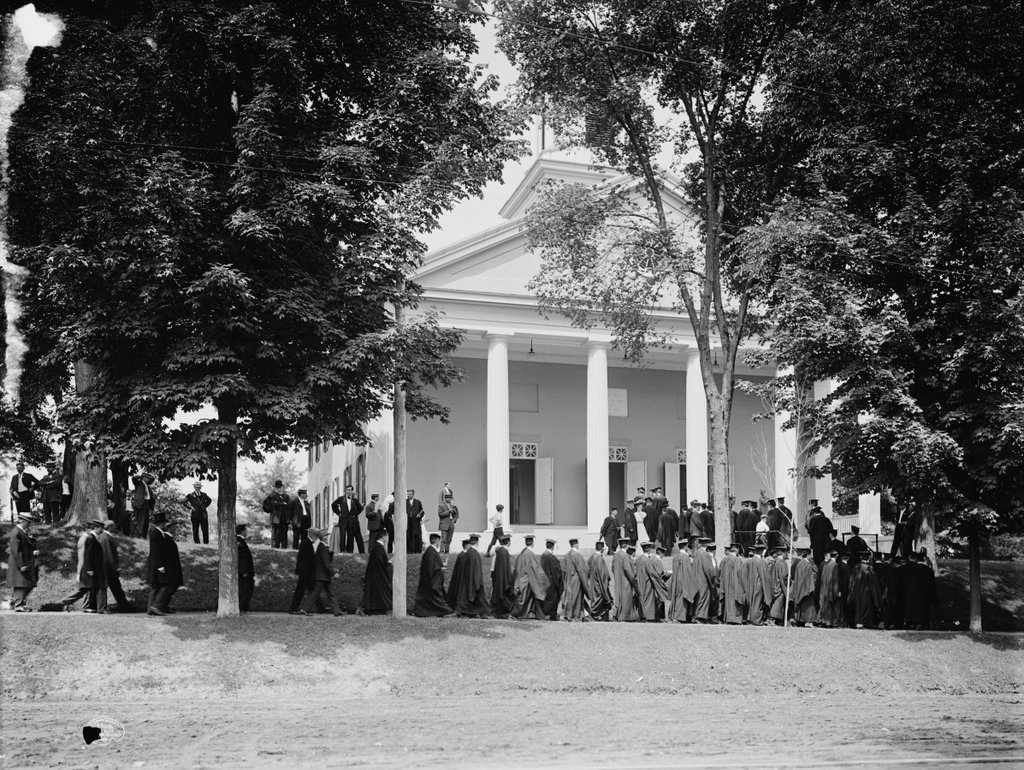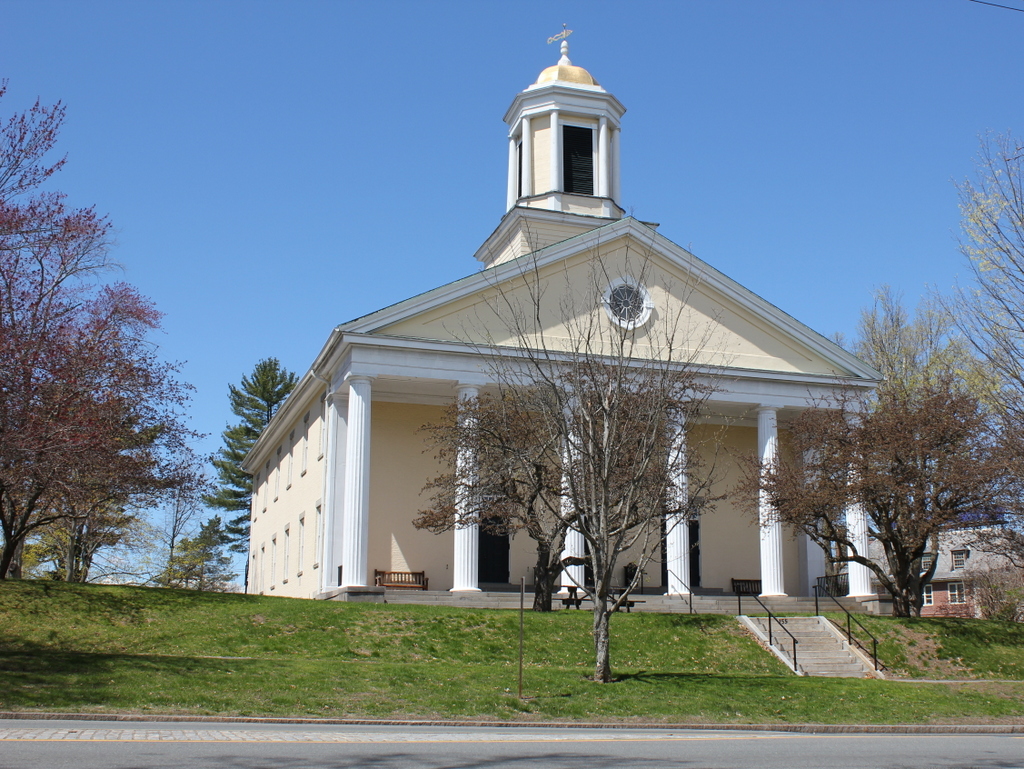Looking east on Center Street from Merchants Row in Rutland, around 1904. Image courtesy of the Library of Congress, Detroit Publishing Company collection.
Center Street in 2015:
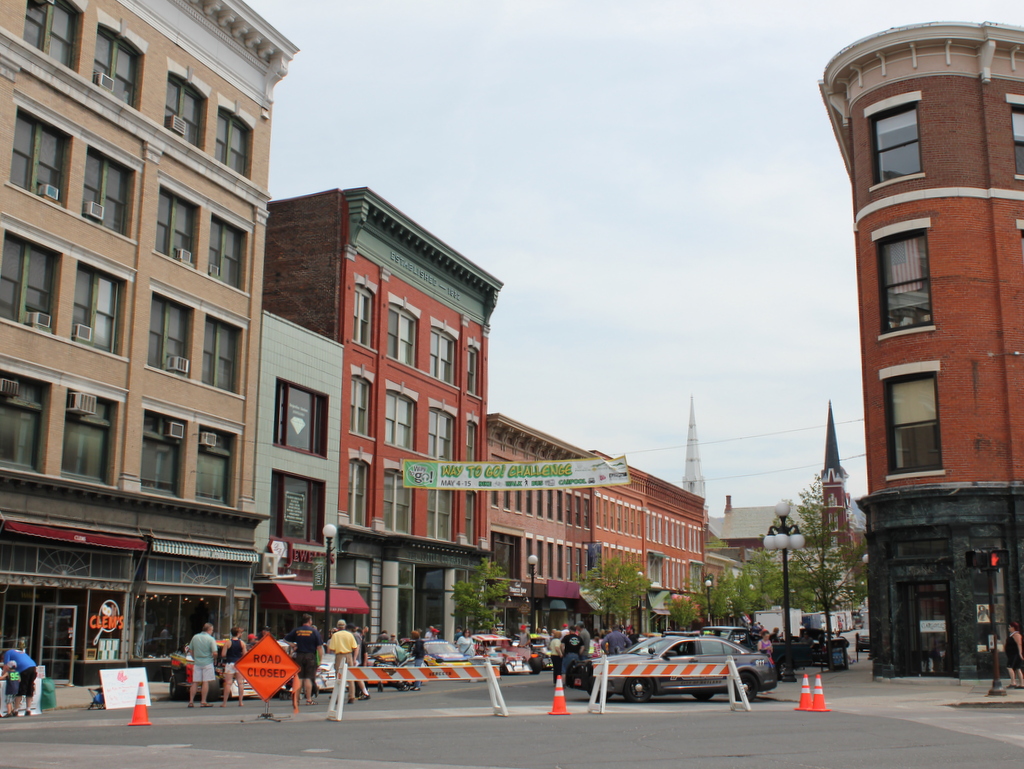
This view of Center Street has seen plenty of changes over the years, but some of the original buildings are still there. The most obvious one is probably the Rutland Savings Bank building on the far right. It was built in the 1860s, but was substantially renovated in the 1950s. Most of its 19th century architectural detail was lost during this renovation, including the mansard roof, which was replaced with a fourth floor, and the pillared entrance, which was replaced with marble along the entire first floor of the building.
Across the street, several other 19th century buildings survive. The long, three story commercial blocks in the center date to the 1860s (left) and 1880s (right), and further up the hill is the red brick steeple of the 1872 First Baptist Church. However, none of the buildings in the left foreground of the first photo survive; these buildings were destroyed in a massive fire in February 1906, just a year or two after the photo was taken. The losses included the Bates House Hotel on the far left, which was replaced with the present-day building in 1907. The other two buildings on the left-hand side of the 2015 photo were also built in the immediate aftermath of the fire, in 1906-1907.

